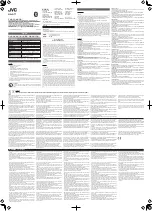
Keep it identical on all those devices. Note that the SSID is case-sensitive and can not exceed
32 characters.
Broadcast SSID
Under AP mode, hiding network name is necessary when you are in a wireless environment that
may have potential risk. By disabling broadcast SSID, the STA can not scan and find
WNAP-6300, so that malicious attack by some illegal STA could be avoided.
802.11 Mode
The WNAP-6300 can communicate with wireless devices of 802.11b/g or 802.11b/g/n. You can
also select Auto and make it work under an appropriate wireless mode automatically.
HT Protect
Enable HT (High Throughput) protect to ensure HT transmission with MAC mechanism. Under
802.11n mode, wireless client can be divided into HT STA and Non-HT STA, among which the one
with HT protect enabled gets higher throughput.
Channel Number
Channel varies much as the available band differs from country to country. Select a proper
operating channel in the drop-down list according to your situation.
Antenna
By default, WNAP-6300 uses its built-in antenna for directional transmission; however, if you
prefer to use an external antenna for your case-dependent applications, you can switch from
“Internal (8 dBi)” to”External (N-Type)”.
Note:
You are able to choose “External (N-Type)” only when you have well done installing the
external antenna; otherwise, it might damage WNAP-6300 itself.
Output Power
Specify the signal transmission power. The higher the output power is, the wider the signal can
cover, but the power consumption will be greater accordingly. Usually “
Full
” is preferred.
Data Rate
Usually “
Auto
” is preferred. Under this rate, the WNAP-6300 will automatically select the highest
available rate to transmit. In some cases, however, like where there is no great demand for speed,
you can have a relatively-low transmit rate for compromise of a long distance.
Chapter 3 Basic Settings Page 29
















































